Text
Bibiliography:
Emmons, L. & Helgen K. “Conepatus humboldtii.” IUCNRedList.com. IUCN. 2008. Web. 25 Feb. 2013. <http://www.iucnredlist.org/details/summary/41631/0>
“Humboldt’s hog-nosed skunk.” Wikipedia: The Free Encyclopedia.Wikimedia Foundation, Inc., 22 Feb. 2013. Web. Date 25 Feb. 2013. <http://en.wikipedia.org/wiki/Humboldt’s_hog-nosed_skunk>
“Humboldt’s hog-nosed skunk: Conepatus humboldtii.” Encyclopedia of Life. Web. 25 Feb. 2013. < http://eol.org/pages/311564/details>
Shaw, Weylan. “Conepatus humboldtii: Humboldt’s hog-nosed skunk.” Animal Diversity Web. University of Michigan, Museum of Zoology. Web. 25 Feb. 2013. <http://animaldiversity.ummz.umich.edu/accounts/Conepatus_humboldtii/>
The Animal Files. “Humboldt’s hog-Nosed Skunk.” TheAnimalFiles.com. Web. 25 Feb. 2013. <http://www.theanimalfiles.com/mammals/carnivores/skunk_humboldts_hog_nosed.html>
0 notes
Text
Focus Questions:
What sorts of things does Humboldt’s hog-nosed skunk feed on?
What is the current conservation status of Humboldt’s hog-nosed skunk?
What do you think might be some potential threats from humans to Humboldt’s hog-nosed skunk?
What is the distinctive physical feature that helps differentiate Humboldt’s hog-nosed skunk from other types of skunks?
What parts of the world can you find Humboldt’s hog-nosed skunk? Are there other places with similar features you could imagine the species thriving?
0 notes
Video
youtube
Another variety of hog-nosed skunk. Similar in size and coloring, however it does not bear the distinctive white line down the face that conepatus humboldtii possess.
0 notes
Photo
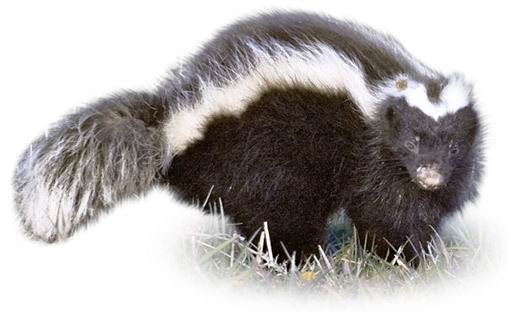
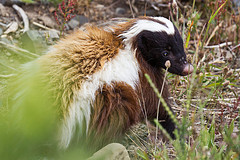
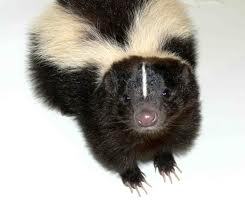

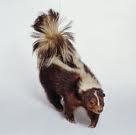
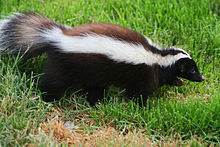
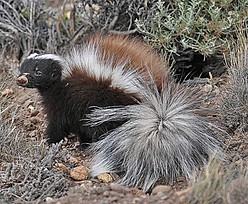


Photographs of Conepatus humboldtii aka Humboldt's Hog-Nosed Skunk, also known as Patagonian Hog-Nosed Skunk.
0 notes
Text
Physical Attributes / Appearance:
The Humboldt hog-nosed skunk has fur that is black to brownish-red with white stripes. They range in size, but average around 30-34 cm (or around 11 1/2 - 13 1/2 inches) in body length and have an average tail length of 17-21 cm (or around 7 - 8 1/2 inches). The males are generally a bit larger than the females, but they appear the same otherwise. One marker that differentiates the Humboldt variety of hog-nosed skunk is the white line down the face (as seen in the picture below). The creatures have a longer nose and a small face that allows them to make use of their bare nose to root up plants and insects. The lifespan of the species is unknown, however a similar specieis of hog-nosed skunk held in captivity lived for a total of 7 years.
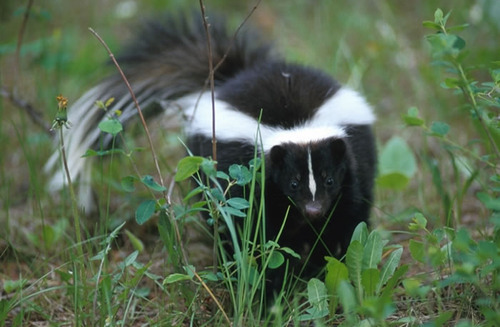
0 notes
Text
Predators / Threats:
Conepatus humboldtii has no natural predators, however the creatures are immune to the venom of pit vipers suggesting they may previously have been preyed on by the snakes. It may also indicate that the skunks themselves prey or preyed on pit vipers though. Humboldt's hog-nosed skunks were hunted for their pelts a great deal between 1960 and 1980. In 1983, Argentina and Chile protected the animals against export, however they are still utilized as pets.
The IUCN Red List Assessment lists Humboldt's hog-nosed skunk as Least Concern as they are "widespread in an area of relatively intact habitat and it is common, sometimes occurring at high densities." [From IUCNRedList.com] The species was last assessed in 2008.

0 notes
Text
Behavior:
Humboldt's hog-nosed skunk is primarily nocturnal and are solitary animals that live alone in dens or burrows. The species communicates using body gestures. They stomp their feet or raise their tails to ward off danger. When threatened they will let off a foul smell from it's anal glands to ward off potential predators. These glands can even be accurately aimed by the skunk at attackers.

0 notes
Video
youtube
Humboldt's hog-nosed skunk in the wild spotted by some local hunters.
0 notes
Text
Feeding Habits / Diet:
The staple of Humboldt's hog-nosed skunk is insects, but they also feed on shrubs, seeds, nuts and fruit. These creatures also feed on smaller animals such as rodents and carrion during the winter months when insects are not as abundant.
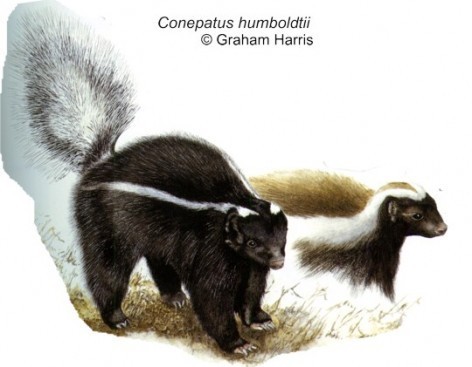
0 notes
Text
Geography / Habitat:
Humboldt's hog-nosed skunk (or as it's also known the Patagonian hog-nosed skunk) is found in the region of South America known as Patagonia. Patagonia is located on the southern end of the continent and is a part of both Chile and Argentina. They dwell in the grassy areas of this region, but also in the rocky outcroppings of the Patagonia as well. They will seek out burrows or dens to rest in during the daylight hours while primarily being active during the day.
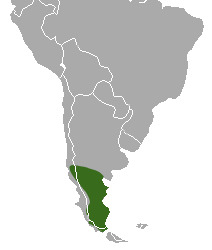
0 notes